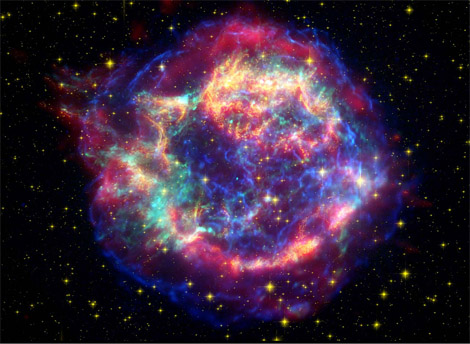What are feelings? How are feelings optimized?
Besides the input from the five physical senses, human consciousness receives feelings. Upcoming posts will offer experiments focused on this input stream, which you can conduct yourself. These experiments will establish whether you can achieve measurable improvements in your own effectiveness stemming from better channeling or processing of feelings-type information.
To prepare for the experiments, let’s contemplate: what are feelings?
Here you can contemplate this question if you wish, or just go on.
Feelings are urges that arise to sensibility within us, within our minds and within our bodies. Feelings are experiences, states of consciousness resulting from motivations, sentiments, preferences or desires. These terms all really mean the same thing: motivations, what we value, what we want, what we are trying to get, what we want to avoid.
Feelings are the way we respond internally to external and internal phenomena, based on what we are trying to get and avoid, and how current events can help or threaten our desired outcomes.
Therefore feelings generally come in two valences, positive or negative. The feelings are positive if current events appear to favor our targeted outcomes, and they are negative if events seem to be heading away from what we want to have happen.
Positive feelings are valued universally in themselves. We don’t need to argue in favor of them, we all like them, and would like to have them all the time.
Negative feelings not only make us feel bad (by definition), they lower our immune system thus making us more prone to disease, and they distract our cognitive concentration thereby reducing our effectiveness. These bad feelings can also serve a positive function as an alarm system to get our attention to the problem fast. Ironically, if the bad feelings continue while one is grappling with the problem on a rational level, it will take longer to solve the problem.
When a problem arises and is sensed partially by the bad feelings within oneself, alerting us to focus on the challenge, it’s easy to say, “Turn off the alarm and get on with solving the problem.” However, it is not so easy because of attachment and Acceleritis.
Acceleritis, the unending acceleration of information entering the human brain each day, simply overloads the average human being’s capacity to do effective mental work of any kind. One kind of mental work we are supposed to get better at as we truly mature and “grow up” and become a “mensch” is to be able to sanely and in a balanced way take our feelings into account in our actions, without being stampeded or reduced to hand-wringing by those feelings. Acceleritis therefore also escalates the power of other mental subsystems that push in the direction of closure, black-and-white thinking, snap decisions, self-consistency and self-imitation — anything to simplify. Complexity is tacitly perceived as the main threat and pain causer. Acceleritis therefore lays many of us low with attachment — if Acceleritis were not present, we would actually have the mental and emotional maturity to cope with the situation without attachment.
What then is attachment?
Here you can contemplate this question if you wish, or just go on.
Attachment is the excessive dependency on something. It is actually love carried too far. You love something so much (a wonderful thing) you cannot do without it, and so you fall prey to fear of losing it, and this distracts the mind so that Observer state and Flow state are impossible. Your mind tends instead — in the Acceleritis-induced state of Emergency Operating Procedure (EOP) — to go around in circles wallowing in the fear of loss or the sense of loss, or the anger and bitterness related to the loss or threatened loss, or the hopeless defeated depression of having lost it with no hope of regaining it. No useful mental work is achieved, no problem solving, no creative new leaps rising to meet the challenge sideways, as would occur in the higher states of effectiveness, namely, the Observer and Flow states.
As discussed in earlier posts, these effectiveness states are posited to be real physical states in the brain, differentiated from one another in measurable ways. Our Theory of Holosentience is based on the hypothesis that the primary dimension determining the state of the brain and consciousness is the degree of harmony among functional areas of the brain (inhabiting our entire sentience at once) — wherein thoughts, feelings, motivations, and the other aspects of self achieve a synchronous integrity in both the experientially measurable consciousness domain as well as the scientifically measurable biometric material domain.
This brings us back to feelings. Feelings have always been less studied and talked about than thoughts. Descartes did not say “I feel, therefore I exist.”
The word feeling originally may have related (Wikipedia says) to the sense of touch, and then its meaning expanded to include the ineffable internal sense that brings us more bits (information) than the five physical senses in terms of the way it affects our actions.
What evidence is there that we are generally more driven by our feelings than by our thoughts? Freud established that thoughts are more likely to be rationalized in support of feelings, rather than people being able to use their thoughts to control their feelings. And yet, how valuable it is to be able to do just that — to have the mental self-discipline to focus one’s thoughts effectively even when one’s feelings are in an uproar.
In a nutshell, feelings are a manifestation of our motivations colliding with the external world. What feeling would we have if we had no motivations?
Here you can contemplate this question if you wish, or just go on.
You can actually discover this for yourself, by meditating. While there are many specific methodologies for meditation, all of them have this mind/gut mirror effect of showing you what your own motivations really are, where they have gotten you, and why you have each experience you ever have. You can also achieve such objectivity that you can, as it were, turn off certain motivations for the moment and see what that feels like — what visions of future possibilities arise now that X motivation is gone, how are you breathing, how do you feel?
This gaining of perspective through meditation makes you feel good. In other words, it not only helps you inspect deeply your own feelings and their consequences in the world, it also generates a feeling, and a very good one.
What is that very, very sweet feeling? Is it happiness? Is it ecstasy? Yes, it’s all those things and more. Then what is it?
It’s love. A word that provokes instant uneasiness all round. It’s a word that makes us all feel silly. The guy has lost it. You don’t talk about such things. Verboten. Just for family talk, not public talk. What an interesting word to have such an effect.
The F-bomb has become popular in meetings with both males and females, at least in certain businesses I have moved through in the last decade. It is more acceptable than the word “love” in such venues.
Beyond getting the author in hot water, what is love?
Here you can contemplate this question if you wish, or just go on. It is the master feeling, the one all the others come from. Love is white light whereas each feeling is a color.
It is the master feeling, the one all the others come from. Love is white light whereas each feeling is a color.
Love is the residue that is left when motivations are tuned down into conscious perspective, in light of an open-minded empirical philosophy of demanding proof for everything, dropping every bit of information one has heard onto a trial workboard in the consciousness storage bin, and taking it offline in terms of decision making. This is the perspective of yoga. Zen. Meditation. Contemplation. Focused singlepointed attention. A way of life for millions of people today and throughout human history. These multi-strands of movements see themselves as part of a whole, although to those outside they seem like a bunch of cults that are all different. They are all the same in achieving perspective, distance from motivations that the bodymind otherwise assumes are immutable, non-negotiable. These methods are among those crystallized into simple steps in our book Freeing Creative Effectiveness.
Why does love remain when one has achieved objective distance from one’s motivations? What evidence do we have for that assertion, and what explanation do we have for it?
As an individual my only evidence for any assertion here are my own experiences. Every time through meditation I clear away the built-in locked-in powerful sway of my own motivations, I discover that I am content, every tiny aspect of what I am experiencing is enjoyable and interesting, I simply love it, all of it, I love myself, and everyone. Others have reported similar experiences, enough so that I know I am not an isolated case. In the next post we will offer a meditative experiment whereby this may also happen to you.
Why should it be so? Why should we feel love when we are not being driven this way and that by irresistible motivations?
In my cosmological Theory of the Conscious Universe (TOTCU) we are all dubs of the master consciousness, like MP3 copies of a master recording of a song, each of us a microcosm of the whole universal consciousness. When we rise above the petty motivations that seem so all-important to us in our daily lives down here on this one planet, we partake of the carrier wave motivation we share with the master consciousness, the one that is always there under all the other motivations, from which they draw their power. Love that is omnidirectional is the wellspring, the source from which we splinter off love of money, love of power, love of sex, love of the idea of getting that big job, and so on. All other motivations are modulations of love. So when the splinter motivations are quieted, the background radiation that differentiates itself into these “local” motivations becomes visible. This is how I explain it to myself, that I have this omnidirectional love experience whenever I am centered and immune to the compulsions to protect and seize what I feel I must have.
Acceleritis makes it very difficult for me to communicate this so that it is widely credible, because Acceleritis works against the stopping of the momentum of the mini-mind —so it seems ridiculous to assert that we already have an abundance of love without having to get anything we don’t already have. And yet, if you allow the possibility of a universal consciousness of which we are all a part, what motivation would it have to be doing this universe if it did not love the doing of a universe as a game in itself, the master game, the master art form, the ultimate form of self-discovery.
Acceleritis makes it much easier to deal with information overload by focusing on differences and categorization into buckets mostly on a single continuum from good to bad. This goes on constantly below our conscious awareness. Making automated decisions that are often the wrong ones. This leads to all sorts of feelings, many of them bad. Clouding over the master feeling that exists already, unbrokenly from beginning to end. It is there underneath all this debris. It comes out when we clear off the rubble.
Now that we’ve explored “feelings”, the next post will describe an experiment you can carry out yourself on the optimization of feelings.
Best to all
Bill
______________________________________________________________
PS – Humorously, Wikipedia says that feelings are the conscious subjective experience of emotion. This is funny because psychology defines emotion as the aspect of feeling that can be measured in the body, such as glandular secretions, muscle tensions, breathing rate, brainwaves, perspiration, etc., and you could just as easily say that feelings cause emotions as you could say emotions cause feelings. The leftover behaviorist psychology way of looking at it would be to make emotions more important — in fact 100% important, with feelings relegated to the trash bin of mind as epiphenomenon, a sound track that actually has no control of what the body is doing.
Such behaviorist Pavlovian thinking is now almost a century out of date, yet remnants of that thinking still creep into the generally excellent Wikipedia (which needs our donations incidentally to stay alive, and someone should tip them off to using advertising to support themselves, doing it in a PBS-like manner to the side all the way down from top to bottom, with true sponsorship tonality). Behaviorist ideas permeated so much of our thinking as a culture when they held reign that growing up we each got a dose of such ideas in the background conversations of adults we overheard. This is where we got the idea that we can just let the mind and body do their thing the way we always do and the way other people do, without any stopping to check out what the hell these operational action decisions are being based on.
______________________________________________________________

Pingback: Because the Universe Is Conscious, Everything Happens for a Reason that Makes Sense to Consciousness | Bill Harvey Blog
Pingback: The Alchemy of Transmuting Feelings into Right Action | Bill Harvey Blog